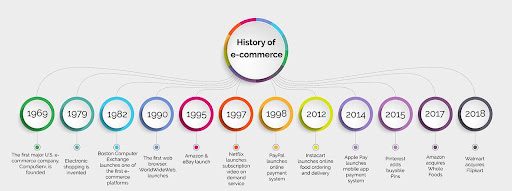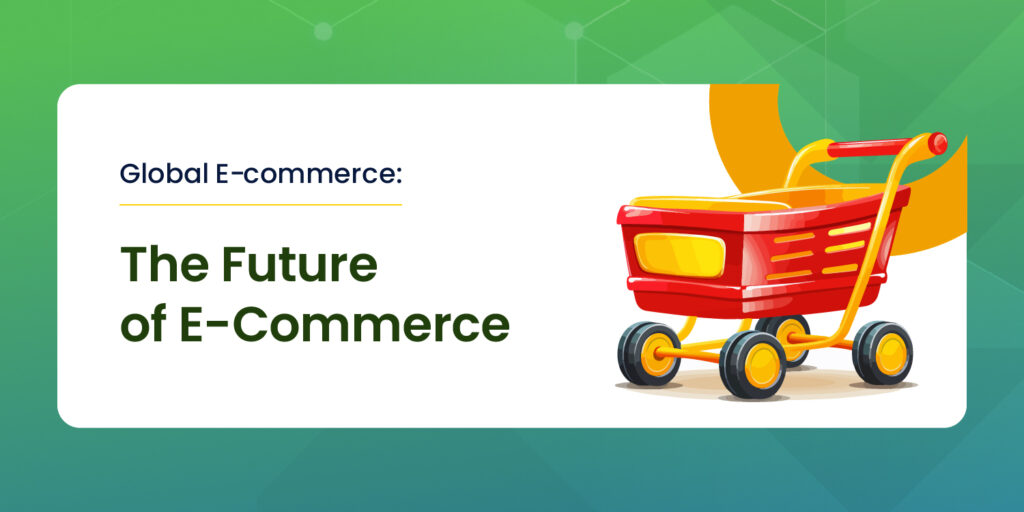If you’re competitor focused, you have to wait until there is a competitor doing something. Being customer-focused allows you to be more pioneering.
Jeff Bezos Founder, Amazon
The time to move your business online was yesterday.
According to new data from IBM’s U.S. Retail Index, the pandemic has accelerated the shift from physical stores to digital shopping by roughly 5 years.
If there’s one thing the past two years have hammered home, it’s that nothing is certain. Business owners and consumers alike have demonstrated a vast capacity for resilience. The E-commerce retail sales in 2021 were at about $4.9 trillion and are projected to increase to $6.8 trillion in the next 2 years. This is the perfect time for entrepreneurs to launch E-commerce businesses.
In 2019, E-commerce had a 14.1% share in the global retail marketplace; by 2023, Statista projects that 22% of all retail transactions will occur online. In complex money terms, sales in the U.S. alone could total more than $475 billion by 2024 — and that’s just B2C.

As one of the fastest-growing AI-powered E-commerce accelerator companies Assiduus Global, in this post, we are going to walk you, step by step, through how to start an E-commerce business and identify and sell stuff that you and your target audiences will love!
I’ll touch on everything you need to start your own successful E-commerce business, including:
Here’s where it all began…
In 1991, the world was only beginning to wake up to the internet. Average citizens likely wouldn’t have even heard of it unless they spent a lot of time on a university campus. The first web browser had just been released beyond the internal network at CERN, a pretty bold advance in a world that had almost no websites. The only existing webcam was focused on a coffee pot in a Cambridge, England computer lab so that people working there would know when it needed a refresh. The word “amazon” referred to a river and rainforest in South America—and that’s it.
These are just a few tiny examples of what E-commerce looked like back then. It may have been primitive, but it was E-commerce all the same.
Let’s now get started!

Beginning your research is the first critical step. Don’t operate off of a hunch. Growing any online business is an investment. Treat it as such.
There isn’t a single business structure that works for everyone. Service-based business, software, digital product sales, and physical products are just the tip of the iceberg. Before you decide what to sell online, you need to understand the different business models available.
It’s not rocket science, but it does impact your business structure.If you want to turn a profit without touching your product or investing heavily at the start, dropshipping or print on demand is a wise choice.
If you like the idea of having your warehouse full of goodies, you’re investing more up front and working with a wholesaling or warehousing (retail) model.
As an E-commerce accelerator business, we can see some E-commerce sites, and they are filled with hundreds of products, dozens of categories, and no real focus.Unless you have a massive budget, you can’t be the next Amazon. You have to niche down to run a profitable E-commerce store.
Choosing your niche is the most crucial step in opening your online business. Start this process by identifying successful companies already working in this space. Make sure that the area is competitive – an absence of competition usually indicates that there’s no market, either.
However, don’t pick an overly crowded niche and skip anything dominated by major brands. If you’re having trouble with this, drill down further on what you want to do – the more specific you are, the less competition you are likely to face.
‘Niche-ing’ down also gives you the benefit of having a lot of ‘shoulder’ niches, related to what you do but not identical. You can work with business owners in those niches to cross-promote, become or acquire an affiliate and grow your customer base.
Now that you’ve identified a niche and business model, you might be tempted to start hunting for products to sell.
Don’t. Before you think about product ideas, think about personas. You can’t expect people to buy your product if you don’t know who you’re selling to.
Who are you? What does the store represent? Who are your ideal customers? You need to project a consistent brand image (a journey that starts with your brand name). An organic seed company that started selling conventional fertiliser wouldn’t last very long.
Fortunately, Facebook makes it relatively easy for us to find your target audience online. Specifically, know precisely how many people you can target. You can drill down to get very focused numbers and detailed demographics.
Once you’ve identified the image you want to project and the customer you are catering to, it’s time to develop product ideas. I suggest starting with one – you’ll invest less at the start.
Before you invest in the product, though, evaluate it carefully. Even if you choose a dropshipping model, you want to test it carefully and get a feel for the product yourself so you can identify any potential problems and prepare customer service scripts to answer common questions.
Part of validating your idea is to determine its viability. Can you suppliers that meet your pricing? What happens if your supplier falls through? Is there a backup option?
By now, you should have a great idea of what your business will look like. You have your target market, your product niche and your brand name. Now is an excellent time to step back, put your business plan on paper, and determine your startup budget, loan needs, and monthly expenses.
But many entrepreneurs don’t take the time to project their revenue and expenses. If you can’t figure out your profit margin, you will fail.
The business planning phase is also when you want to iron out details like your staff, product sourcing, logistics and marketing budget. Make sure you understand all the available financial resources available to you.
E-commerce accelerator companies like Assiduus Global will store your inventory for you while utilising their warehouse space to ship products. AI-powered inventory management software that E-commerce accelerator companies like Assiduus Global implement will help keep your business organised, mainly if you deal with a large inventory of items.
And no E-commerce business can succeed without a solid strategy, so be sure to have that outlined as well.
Once you’re officially an E-commerce business owner, you need to register your domain name and any redirect URLs that might be relevant. You’re going to need the design info you settled on in the last step now, when you finally build your store. Whatever design you choose needs to be compatible with your E-commerce software, too.
The best E-commerce sites invest heavily in online marketing. You better have the elbow grease if you don’t have the funds. Subscribe to marketing newsletters or listen to digital marketing podcasts to keep a pulse on the digital marketing industry and get your fill of marketing tips.
There are plenty of advantages to starting an E-commerce business instead of a brick-and-mortar one — the initial investment is much lower, you can begin big or small, and your online store can operate 24 hours a day, seven days a week, for customers all over the country or even the world, if you’re willing to ship that far. It’s also much easier and less costly to expand operations if need be — all making starting an E-commerce business all the more worthwhile for aspiring entrepreneurs.
There are, however, essential steps to take and investments to make if you want your business to emerge as an internet success story. You should treat your E-commerce website like any other business — stay compliant with tax laws, obtain the necessary permits, invest in customer retention and communication, and don’t forget about building a mobile-friendly platform.
As an E-commerce accelerator company , here’s one thing we can say with a lot of conviction, with E-commerce, you need to build up trust because people don’t see you in person … so they could be sceptical. The good thing is, with blogs and social media, it’s easier than ever to build that trust. Give them an inside look at your life and business, and they’ll want to support you.

What We Do
Company
Resources
Careline:+1 (917) 5957762
© 2025 Assiduus Global INC. All Rights Reserved.



